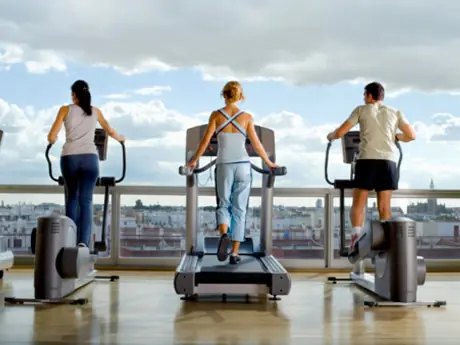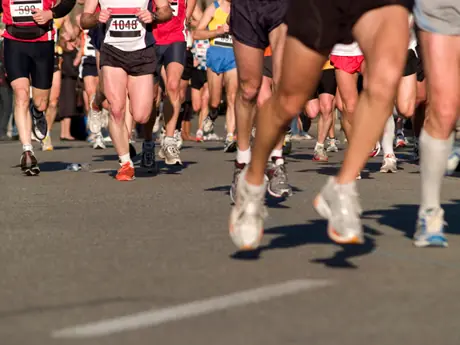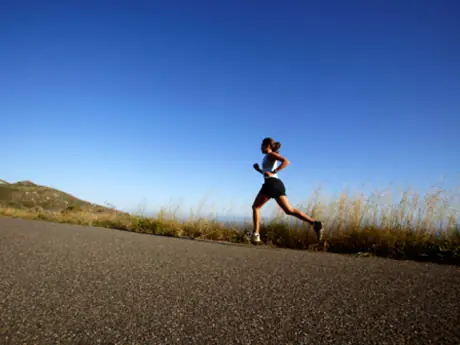
In theory, you're supposed to be slower at 44 than you were at 41. But Nick Berra's winning time in the masters 800-meter race at this year's USA Track & Field Outdoor Championships in Des Moines—1:56.27—was his fastest time in three years.
At an age when many runners find they need more time to recover from workouts, Berra is training as hard as ever. The key? Some of those workouts are on an underwater treadmill. He's not cross-training to recover from injury; he's cross-training so that he can work harder without getting injured in the first place. (Avoid these 7 Surprising Sources of Running Injuries.)
More: 3 Ways to Build an Injury-Proof Foundation for Running
The idea of cross-training when healthy isn't new, but the problem has always been specificity: swimming and biking don't develop running-specific muscles. Options like anti-gravity and underwater treadmills, which closely mimic running form while minimizing impact, have emerged only recently.
12 Weird Running Innovations That Actually Work
Alberto Salazar, whose athletes use both techniques, is among the earliest proponents of these machines. Olympic silver-medalist Galen Rupp has an underwater treadmill that allows him to add 30 miles a week to the 100 he runs on land. The good news for the rest of us is that these options are becoming more widely available. AlterG, makers of the Anti-Gravity Treadmill, estimate that there are 630 publicly available machines across the country (visit AlterG for a location finder). HydroWorx underwater treadmills are showing up in places like the aquatic center that Nick Berra visits in Mechanicsburg, Pennsylvania.
More: 5 Ways to Train Through the Pain
But don't expect to use these machines to duplicate your dry-land workouts with no adjustments. "You have to throw 'speed' and 'pace' out the window," says Berra. Here's how to get the most bang for your cross-training buck:
Underwater Treadmill
Adjust the belt speed of the treadmill and the jet speed of water flowing past you to get your desired effort level. Any speed will feel harder than it does on land due to water resistance. Add easy sessions to your routine or replace dry-land workouts.
To simulate 12 x 400 meters in 70 seconds with two minutes to recover, Berra sets the belt to 8 mph and the water jet to max; for the recovery, he turns the jets off and slows to 4 mph. For longer intervals, reduce the jet and belt speeds.
- 1
- of
- 2
Get ACTIVE on the Go


Couch to 5K®
The best way to get new runners off the couch and across the finish line of their first 5K.
Available for iOS | Android







Discuss This Article